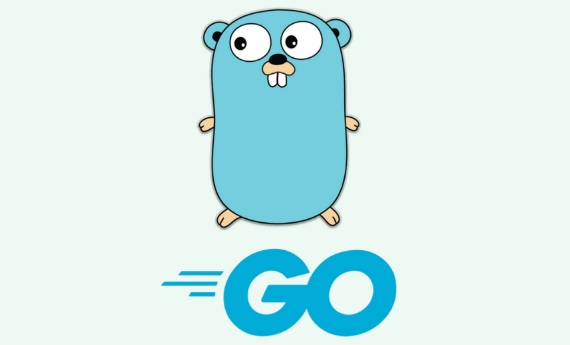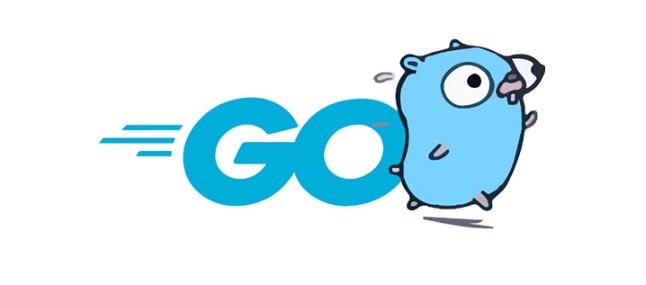The key to Edge AI model deployment is to select the right lightweight model, choose the right hardware platform, simplify the deployment process and maintain it well. 1. Select the right model: Use lightweight models such as MobileNet and EfficientNet or compress the model through pruning and quantization, and optimize with frameworks such as TensorFlow Lite; 2. Select hardware platform: Select platforms such as Raspberry Pi, NVIDIA Jetson or Qualcomm chips based on performance, power consumption and development support; 3. Deployment and maintenance: Unify the environment through containerized tools, use platforms such as Azure IoT Edge to manage devices, and design reasonable model update strategies to ensure service continuity.

Edge AI model deployment, to put it bluntly, put the trained AI model on the edge device to run. Why do this? Because not all scenarios are suitable for transferring data to the cloud for processing, such as scenarios with high real-time requirements, unstable networks, and sensitive privacy.

To successfully implement Edge AI deployment, you have to understand the following key points.
1. Choose the right model: light weight is the best
Edge equipment resources are limited, and its memory and computing power are not as good as servers. So the model cannot be too "heavy", otherwise it will not be able to run.

- A common practice is to use lightweight model architectures, such as MobileNet, EfficientNet (image orientation), or TinyML-style small models.
- Another way is to compress the large model, such as pruning, quantization, distillation and other technologies.
- In practical applications, many developers will choose frameworks such as TensorFlow Lite and ONNX Runtime to optimize the performance of the model at the edge.
For example : You are working on a smart camera project and want to identify if there is anyone in the picture. Using the original ResNet may cause serious lag, but it will be much smoother to replace it with MobileNetV3.
2. Hardware platform selection: Don’t just look at the price
There are many types of edge devices, ranging from Raspberry Pi, NVIDIA Jetson to various embedded chips. Which one to choose depends on your needs:

- Performance requirements : Image recognition may require GPU acceleration, while voice recognition can rely on DSP or NPU.
- Power consumption limit : In some scenarios, power supply is limited, such as drones or wearable devices, you have to choose low-power chips.
- Development support : Different platforms have different levels of support for AI frameworks. Some have SDKs and toolchains, while others are more "naked".
Several platforms to consider :
- Raspberry Pi Coral USB Acceleration Stick: Good for Beginners and Small-scale Deployments
- NVIDIA Jetson Series: Suitable for high-performance edge reasoning in images and videos
- Qualcomm's AI engine (Snapdragon chip): commonly used in mobile devices
3. The deployment process must be simplified and maintenance must be kept up
Model deployment is not a one-time thing, and subsequent updates, monitoring, and log collection are all important.
- The deployment process usually includes: model conversion, packaging, upload, loading, and execution.
- Use containerized tools (such as Docker) to unify the deployment of the environment and reduce the problem of "can run on my machine".
- For the management of multiple devices, edge computing platforms such as Azure IoT Edge and AWS Greengrass can be used to centrally control it.
A detail that is easy to ignore : Should I restart the service when the model is updated? How to ensure that the update process does not interrupt business? All of these require good strategies in advance.
Basically that's it. The deployment of Edge AI model does not seem complicated, but there are many details that need to be paid attention to when it comes to doing it, especially the adaptation and long-term maintenance of the model and hardware.
The above is the detailed content of Go for Edge AI Model Deployment. For more information, please follow other related articles on the PHP Chinese website!

Hot AI Tools

Undress AI Tool
Undress images for free

Undresser.AI Undress
AI-powered app for creating realistic nude photos

AI Clothes Remover
Online AI tool for removing clothes from photos.

Clothoff.io
AI clothes remover

Video Face Swap
Swap faces in any video effortlessly with our completely free AI face swap tool!

Hot Article

Hot Tools

Notepad++7.3.1
Easy-to-use and free code editor

SublimeText3 Chinese version
Chinese version, very easy to use

Zend Studio 13.0.1
Powerful PHP integrated development environment

Dreamweaver CS6
Visual web development tools

SublimeText3 Mac version
God-level code editing software (SublimeText3)
 Is golang frontend or backend
Jul 08, 2025 am 01:44 AM
Is golang frontend or backend
Jul 08, 2025 am 01:44 AM
Golang is mainly used for back-end development, but it can also play an indirect role in the front-end field. Its design goals focus on high-performance, concurrent processing and system-level programming, and are suitable for building back-end applications such as API servers, microservices, distributed systems, database operations and CLI tools. Although Golang is not the mainstream language for web front-end, it can be compiled into JavaScript through GopherJS, run on WebAssembly through TinyGo, or generate HTML pages with a template engine to participate in front-end development. However, modern front-end development still needs to rely on JavaScript/TypeScript and its ecosystem. Therefore, Golang is more suitable for the technology stack selection with high-performance backend as the core.
 How to build a GraphQL API in golang
Jul 08, 2025 am 01:03 AM
How to build a GraphQL API in golang
Jul 08, 2025 am 01:03 AM
To build a GraphQLAPI in Go, it is recommended to use the gqlgen library to improve development efficiency. 1. First select the appropriate library, such as gqlgen, which supports automatic code generation based on schema; 2. Then define GraphQLschema, describe the API structure and query portal, such as defining Post types and query methods; 3. Then initialize the project and generate basic code to implement business logic in resolver; 4. Finally, connect GraphQLhandler to HTTPserver and test the API through the built-in Playground. Notes include field naming specifications, error handling, performance optimization and security settings to ensure project maintenance
 How to install Go
Jul 09, 2025 am 02:37 AM
How to install Go
Jul 09, 2025 am 02:37 AM
The key to installing Go is to select the correct version, configure environment variables, and verify the installation. 1. Go to the official website to download the installation package of the corresponding system. Windows uses .msi files, macOS uses .pkg files, Linux uses .tar.gz files and unzip them to /usr/local directory; 2. Configure environment variables, edit ~/.bashrc or ~/.zshrc in Linux/macOS to add PATH and GOPATH, and Windows set PATH to Go in the system properties; 3. Use the government command to verify the installation, and run the test program hello.go to confirm that the compilation and execution are normal. PATH settings and loops throughout the process
 Go sync.WaitGroup example
Jul 09, 2025 am 01:48 AM
Go sync.WaitGroup example
Jul 09, 2025 am 01:48 AM
sync.WaitGroup is used to wait for a group of goroutines to complete the task. Its core is to work together through three methods: Add, Done, and Wait. 1.Add(n) Set the number of goroutines to wait; 2.Done() is called at the end of each goroutine, and the count is reduced by one; 3.Wait() blocks the main coroutine until all tasks are completed. When using it, please note: Add should be called outside the goroutine, avoid duplicate Wait, and be sure to ensure that Don is called. It is recommended to use it with defer. It is common in concurrent crawling of web pages, batch data processing and other scenarios, and can effectively control the concurrency process.
 Go for Audio/Video Processing
Jul 20, 2025 am 04:14 AM
Go for Audio/Video Processing
Jul 20, 2025 am 04:14 AM
The core of audio and video processing lies in understanding the basic process and optimization methods. 1. The basic process includes acquisition, encoding, transmission, decoding and playback, and each link has technical difficulties; 2. Common problems such as audio and video aberration, lag delay, sound noise, blurred picture, etc. can be solved through synchronous adjustment, coding optimization, noise reduction module, parameter adjustment, etc.; 3. It is recommended to use FFmpeg, OpenCV, WebRTC, GStreamer and other tools to achieve functions; 4. In terms of performance management, we should pay attention to hardware acceleration, reasonable setting of resolution frame rates, control concurrency and memory leakage problems. Mastering these key points will help improve development efficiency and user experience.
 Go embed package tutorial
Jul 09, 2025 am 02:46 AM
Go embed package tutorial
Jul 09, 2025 am 02:46 AM
Using Go's embed package can easily embed static resources into binary, suitable for web services to package HTML, CSS, pictures and other files. 1. Declare the embedded resource to add //go:embed comment before the variable, such as embedding a single file hello.txt; 2. It can be embedded in the entire directory such as static/*, and realize multi-file packaging through embed.FS; 3. It is recommended to switch the disk loading mode through buildtag or environment variables to improve efficiency; 4. Pay attention to path accuracy, file size limitations and read-only characteristics of embedded resources. Rational use of embed can simplify deployment and optimize project structure.
 How to build a web server in Go
Jul 15, 2025 am 03:05 AM
How to build a web server in Go
Jul 15, 2025 am 03:05 AM
It is not difficult to build a web server written in Go. The core lies in using the net/http package to implement basic services. 1. Use net/http to start the simplest server: register processing functions and listen to ports through a few lines of code; 2. Routing management: Use ServeMux to organize multiple interface paths for easy structured management; 3. Common practices: group routing by functional modules, and use third-party libraries to support complex matching; 4. Static file service: provide HTML, CSS and JS files through http.FileServer; 5. Performance and security: enable HTTPS, limit the size of the request body, and set timeout to improve security and performance. After mastering these key points, it will be easier to expand functionality.
 Go select with default case
Jul 14, 2025 am 02:54 AM
Go select with default case
Jul 14, 2025 am 02:54 AM
The purpose of select plus default is to allow select to perform default behavior when no other branches are ready to avoid program blocking. 1. When receiving data from the channel without blocking, if the channel is empty, it will directly enter the default branch; 2. In combination with time. After or ticker, try to send data regularly. If the channel is full, it will not block and skip; 3. Prevent deadlocks, avoid program stuck when uncertain whether the channel is closed; when using it, please note that the default branch will be executed immediately and cannot be abused, and default and case are mutually exclusive and will not be executed at the same time.






